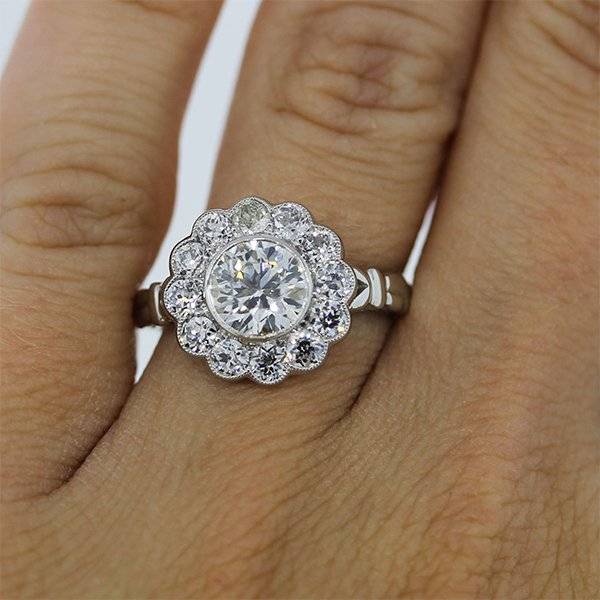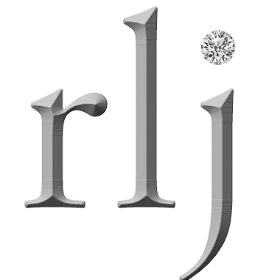ReSelling Diamonds

When it comes to reselling jewelry with diamonds, it’s easy to think that the item will at least earn what was paid for it due to the fact of having diamonds incorporated in the item.
Unfortunately, these same sellers learn the hard way that diamonds and diamond jewelry are also subject to the same rules of resale as any other property. These rules are as follows:
- An item of property will only sell for what people are willing to spend on it, regardless of how much was paid for the item originally.
- Resale often depends on how difficult or how easy a sale will be for a customer in terms of payment.
- Fraud happens and a lot, and sellers have to protect themselves from being fleeced.
- An appraisal value in no way guarantees the same amount will be received in a resale.
- Supply and demand dominate values, irrespective of the specialty of the item.
With the general rules of resale in mind, then comes the issue of diamonds in particular. People familiar with buying diamond jewelry item will remember the terms “clarity” and “certification.” These factors matter, but there’s a lot more to the picture than just the two points. Specifically, diamonds are valued based on four factors: carat weight, cut, color and, of course, clarity. All four put together have a big say on how valuable a diamond is in resale and as a stone in general.
Clarity
Diamond clarity has to do with the actual status of the diamond stone itself. Clarity scores are determined based on the amount and type of imperfections in a stone or lack of them. Imperfections can include either blemishes on the outside of a diamond or inclusions within the stone. Those diamonds that have no visible imperfections under a magnification set at 10x are the highest point of clarity and worth the most. They are also very, very rare. Most stones, regardless of origin or history, have some kind of an imperfection or a few.
Of course, there are going to be different categories of imperfections. Some are slight and some are more glaring. Two stones with different blemishes or inclusions should not be valued the same. So there are clarity grades to distinguish between different levels of imperfections. These include the following:
- Flawless (FL) – This is the rare stone that has no visible imperfections under a 10x magnification. This level of quality sets the standard for everything else to be compared to.
- Internally Flawless (IF) – The diamond is clear of any internal issues or inclusions. However, the stone does have slight surface imperfections which cause it to be less than perfect.
- Very, Very Slightly Included (VVS1, VVS2) – The inclusions inside the stone exist, but they are very hard to see. An expert has to work hard to find and see them even with the powerful magnification involved.
- Very Slightly Included (VS1-VS2) – Minor inclusions are present but a 10x magnification is needed to see them. When used, the inclusion is clear and present.
- Slightly Included (SI1-SI2) – A viewer doesn’t need magnification to see the problems with this level diamond, but they are not obvious without magnification.
- Included (I1-I3) – No magnification is needed at all. The diamond has flaws that can be seen with the naked eye in good light. These stones are border-line or rejected altogether for jewelry.
Some owners may be very good reviewers of diamonds on their own, but paperwork and certification still trump personal opinion regarding which grade a diamond should get unless the discrepancy is obvious on immediate review. And even then experts have years of experience under their belt determining clarity that the amateur cannot replicate in a few days. However, there are few basic rules anyone can follow to determine roughly where a diamond will start with a resale value.
First, if any imperfection can be seen on the stone with the naked eye in good light, then the diamond definitely falls into the last grade noted above, Included. Note, however, it can be hard if not impossible to see the quality of a diamond that is smaller than 0.3 carats, which are common on lesser value jewelry arrangements.
Second, a diamond with fewer facet cuts will be easier to grade, even as an amateur, because the inside of the stone can be seen far better than a more complex stone.
Third, jewelry items with multiple stones can usually be assumed to have the same grade of diamonds throughout since that ensures a consistent color and appearance on the whole item versus one stone.
Color
Diamonds are also graded by their coloring. The scale runs from colorless to obvious shading. Those stones that have no color or barely any shading without magnified examination are the most valuable, at least in terms of color. Those that have clear shading are worth far less and tend to be far more common in number. The deepest shades appear as light yellow.
The alphabet is used to signify the different stone grades. Diamonds that are in the colorless category fit in between D and F. Without a magnifying glass, the next category of near colorless can also seem to be the same to the human eye. These are stones in categories G through I. From category J deeper and hints of color begin to appear to the human eye.
Determining the value of a diamond will always start with the evaluation of the above two categories of clarity and color. From there the carat size of the stone, as well as the cut will also influence valuation. More intricate cuts can demand higher pricing, but the clarity and color still demand most of the attention. Only the carat size has as much of a big a factor in pricing when the carat is a larger size.
From these aspects then the rest of the jewelry piece comes into play. This includes any precious metals used in the framing as well as the worksmanship and the overall demand for the item in the current jewelry market. This is where final pricing gets a bit hard to explain. While an owner could have a very intricate set of diamonds in an item, the setting and design may clearly appear dated after a number of years. Since a resale buyer often needs to be able to pass the item onto a new buyer, it needs to be attractive to the current market.
That in turn means some jewelry won’t catch high pricing above the value of the stones involved and the spot price value of the metal used, irrespective of what may have originally been paid for the jewelry. In other cases, depending on the designer, the collectability of the item may cause its value to go very high. Only an expert valuation at a true selling price and perspective will actually confirm this.
Given all the above, private sellers are well advised to work with a reputable, quality jewelry buyer. For those who want to sell diamonds in Boca Raton, Raymond Lee Jewelers is South Florida’s most trusted Jewelry Sales and Service Center. We carry an extensive collection of designer jewelry, vintage jewelry, GIA certified diamonds and luxury timepieces. Raymond Lee Jewelers provides professional jewelry and watch repair services, as well as professional jewelry customizations.

